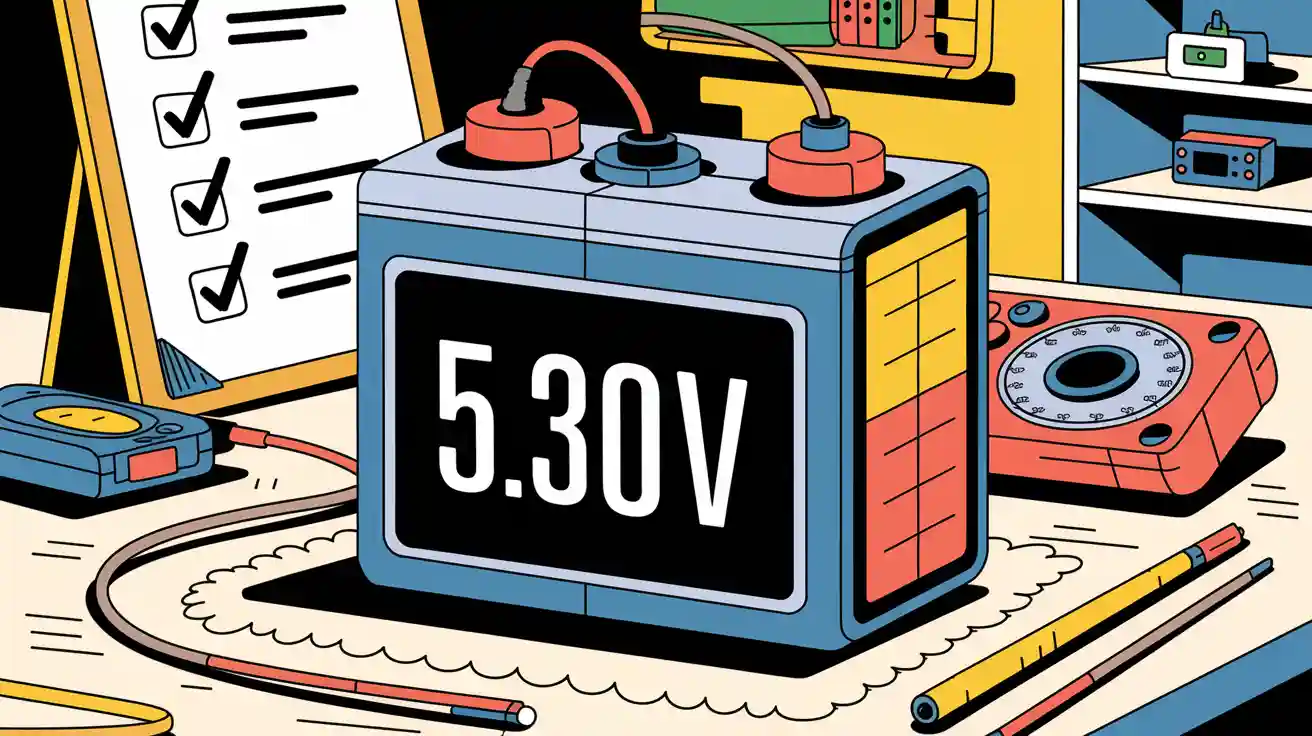
Selecting the best 5.30V lithium battery is critical for ensuring seamless business operations. You must focus on power needs, device compatibility, and overall performance to avoid inefficiencies. Prioritize batteries with robust safety features and reliable supplier support. These factors directly impact operational reliability and the long-term success of your applications.
Key Takeaways
Check what power you need. Know the voltage and capacity to make sure the battery works well for your use.
Make sure it fits. Match the voltage and connectors to stop problems and help it work smoothly with your devices.
Pick safe batteries. Choose ones with trusted safety labels to keep them reliable and lower risks while using them.
Part 1: Understanding Your Power Needs

1.1 Determining Voltage and Capacity Requirements
Understanding voltage and capacity requirements is the first step in selecting the right 5.30V lithium battery. You need to assess the specific energy demands of your application. Industrial settings often require batteries with precise voltage and capacity specifications to ensure uninterrupted operations.
The NERC report highlights the importance of distributed energy resources meeting operational standards based on geographical distribution.
The Electric Power Research Institute recommends voltage and frequency ride-through settings tailored to industrial applications.
These insights emphasize the need for batteries that align with your operational standards. For example, registered inverter-based resources (IBRs) must maintain current injection and frequency support during disturbances. This ensures energy flow continuity in the grid, even under challenging conditions.
1.2 Evaluating Energy Efficiency and Runtime
Energy efficiency and runtime are critical factors when choosing a lithium battery. You should compare performance parameters to identify the most suitable option for your needs. The table below provides key metrics for lithium battery applications:
Performance Parameter | Value |
|---|---|
Average Efficiency | |
Total Capacity | 6.6 kWh ± 0.5 |
Useful Maximum Capacity | 5.5 kWh ± 0.4 |
Energy Density (Charge) | 86 Wh/kg ± 6.0 |
Energy Density (Discharge) | 73 Wh/kg ± 5.0 |
Charge/Discharge Efficiency | 84.6% ± 0.1 |
Fastest Charge Time | 2h04min |
Slowest Charge Time | 10h46min |
Fastest Discharge Time | 1h33min |
Slowest Discharge Time | 3h48min |
This data helps you evaluate how efficiently a battery stores and delivers energy. It also provides insights into runtime expectations, ensuring your application remains operational for the required duration.
1.3 Identifying Application-Specific Demands
Every application has unique energy demands. You must identify these requirements to ensure the battery meets your operational goals. For instance, high-drain devices may require batteries with higher energy density and faster discharge rates. Conversely, low-drain applications might prioritize longer runtime over peak performance.
Consider factors such as environmental conditions, usage patterns, and device compatibility. Batteries used in outdoor environments should offer durability and resistance to temperature fluctuations. Similarly, applications requiring frequent cycling benefit from batteries with optimized charge/discharge efficiency.
By tailoring your selection to your application’s specific needs, you can maximize performance and minimize downtime. This approach ensures your investment delivers long-term value and reliability.
Part 2: Ensuring Compatibility with Devices
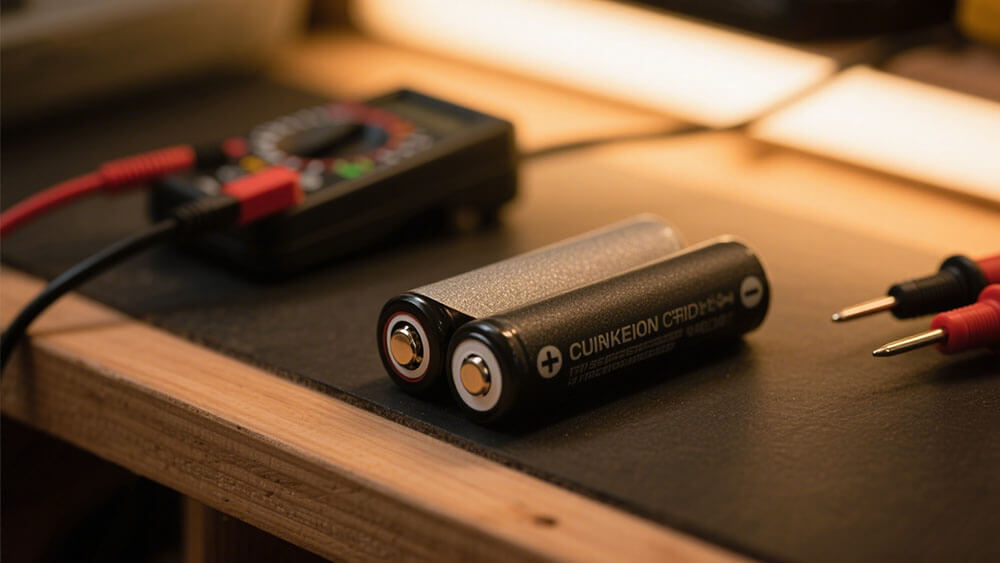
2.1 Matching Voltage and Connector Types
Matching voltage and connector types is essential for ensuring seamless integration between lithium batteries and your devices. Voltage mismatches can lead to performance issues or even permanent damage to your equipment. You should verify that the battery’s voltage aligns with your device’s requirements to avoid operational disruptions.
Connector compatibility is equally important. Devices often use specific connector types, such as pin connectors or snap terminals. Selecting a battery with the correct connector ensures a secure and stable connection. Statistical analyses of battery parameters, such as voltage and impedance, help manufacturers minimize cell-to-cell variations. These variations can impact battery degradation and performance.
Parameter | Findings | Description |
|---|---|---|
Cell-to-Cell Variation | Significant impact on battery degradation performance | Variations caused by production lead to performance spread |
Voltage/SOC Variations | Can cause permanent internal damage | Inhomogeneity in cells results in voltage and state-of-charge variations |
Screening Process | Necessary for high homogeneity | Ensures stable configuration of battery modules or packs |
Parameters for Indexing | Capacity, mass, impedance, resistance, voltage | Multiple parameters used to assess cell-to-cell variation |
Statistical Analysis | Examined 1100 cells | Characterized variation in ohmic impedance and other parameters |
Independent Parameters | Capacity, resistance, rate capability | Evaluated for cell variations |
This data highlights the importance of selecting batteries with consistent voltage and connector specifications to ensure compatibility and reliability.
2.2 Assessing Physical Dimensions and Weight
Physical dimensions and weight play a critical role in device compatibility. You must confirm that the battery fits within the allocated space in your device. Oversized batteries can obstruct installation, while undersized ones may compromise stability.
Weight considerations are equally important, especially for portable devices. Excessive weight can reduce mobility and strain your equipment. Manufacturers often provide detailed specifications for lithium batteries, including size and weight, to help you make informed decisions.
2.3 Verifying Integration with Existing Systems
Integration with existing systems ensures smooth operation and prevents compatibility issues. You should evaluate whether the battery supports your device’s software and hardware configurations. For example, some systems require batteries with specific communication protocols to monitor charge levels and performance.
Environmental factors also influence integration. Batteries used in harsh conditions must offer features like thermal resistance and waterproofing. These qualities ensure reliable performance in challenging environments. By verifying integration, you can avoid costly downtime and ensure your devices operate efficiently.
Part 3: Evaluating Battery Performance and Life
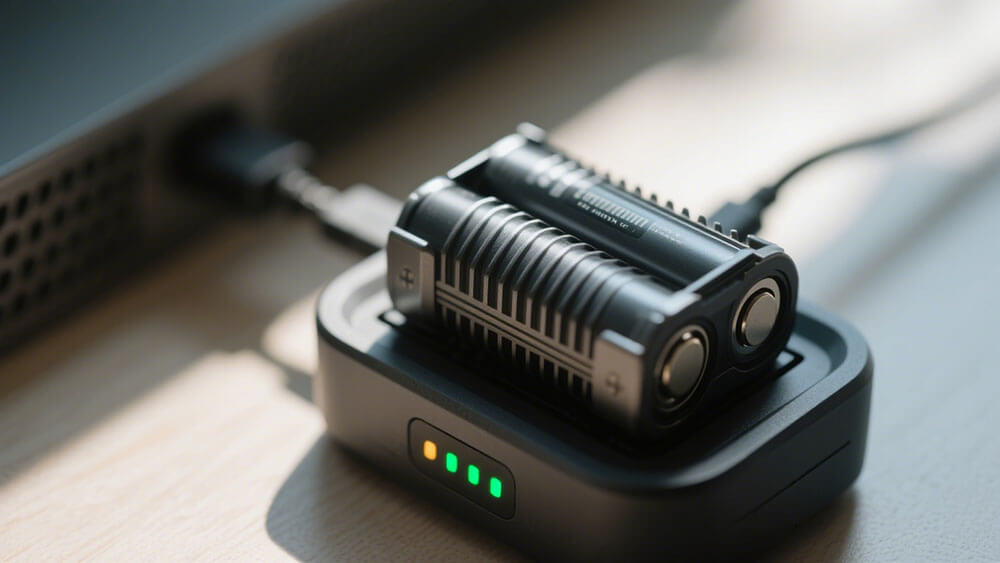
3.1 Understanding Charging Cycles and Depth of Discharge
Charging cycles and depth of discharge significantly influence battery life and overall performance. You should understand these parameters to optimize your battery usage and extend its lifespan.
Lithium batteries undergo less polarization during charging compared to discharging. Discharge processes are diffusion-limited, which can impact performance over time. Additionally, lithium intercalation phases in aluminum play a crucial role in determining battery efficiency.
To ensure safe and efficient charging, follow these guidelines:
Use a maximum charging current of 0.5C (e.g., 1.10A for a 2.20Ah cell).
Maintain a charging rate of 0.3C or lower to prevent overheating.
Opt for a CC/CV charger to achieve optimal charging results.
By adhering to these practices, you can reduce wear on your battery and maintain consistent performance throughout its life cycle.
3.2 Reviewing Efficiency and Discharge Rates
Efficiency and discharge rates are critical metrics for evaluating battery performance. Lithium-ion batteries outperform lead-acid batteries in several key areas, making them a preferred choice for modern applications.
Metric | Lithium-ion Batteries | Lead-acid Batteries |
|---|---|---|
Charging/Discharging Efficiency | ~90% | ~70% |
Cycle Life | 5000-8000 cycles | 300-500 cycles |
Self-discharge Rate | 1%-2% per month | 3%-4% per month |
Lithium-ion batteries offer higher efficiency during charging and discharging, ensuring minimal energy loss. Their extended cycle life allows you to use them for years without significant degradation. Additionally, their lower self-discharge rate ensures that stored energy remains available for longer periods.
When selecting a battery, prioritize models with high efficiency and low discharge rates. These features enhance operational reliability and reduce maintenance costs over time.
3.3 Comparing Lifespan Across Brands
Battery life varies significantly across brands, depending on design, materials, and manufacturing processes. Comparing lifespan data helps you identify the most durable options for your application.
Device | 1hr | 2hr | 4hr | 8hr | 12hr | 24hr |
|---|---|---|---|---|---|---|
Oyster2 4G | 1 year | 1.8 years | 2.8 years | 4.5 years | 6 years | 7 years |
Remora2 4G | 5 years | 8.5 years | 10 years | 10 years | 10 years | 10 years |
Yabby GPS 4G | 17 weeks | 30 weeks | 45 weeks | 1.3 years | 1.7 years | 3 years |
Yabby Wifi 4G | 20 weeks | 40 weeks | 1.4 years | 2.5 years | 3.8 years | 6.5 years |
Oyster Sigfox | 1.5 years | 2 years | 2.5 years | 3.3 years | 3.7 years | 5.5 years |
Devices like the Remora2 4G demonstrate exceptional battery life, lasting up to 10 years under optimal conditions. In contrast, models such as the Yabby GPS 4G offer shorter lifespans but may still meet specific application needs.
When comparing brands, consider factors like runtime, environmental resistance, and compatibility with your devices. Selecting a battery with a longer lifespan reduces replacement frequency and ensures uninterrupted operations.
Part 4: Prioritizing Safety and Quality Standards
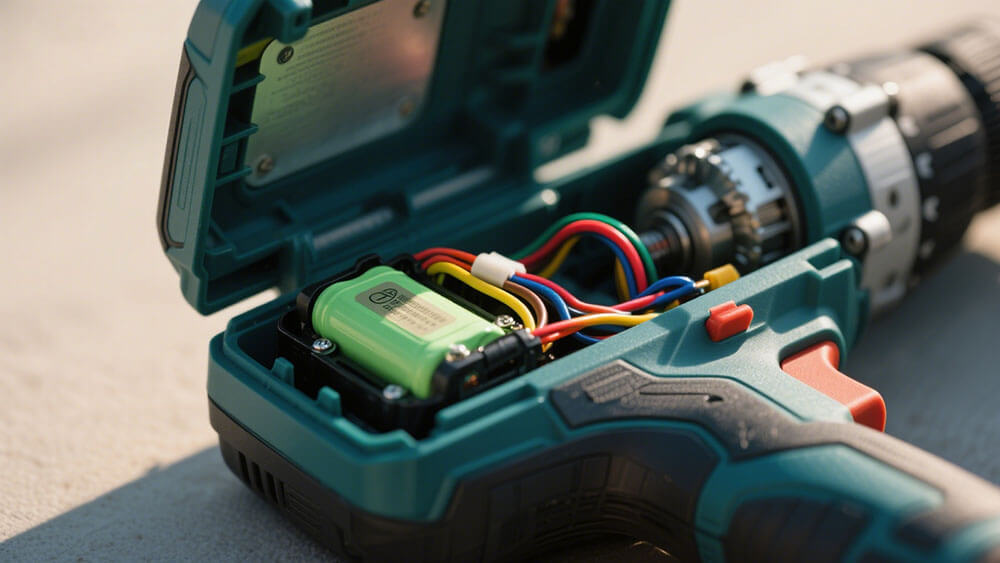
4.1 Checking for Certifications and Compliance
Certifications and compliance standards are essential for verifying the safety and reliability of lithium batteries. You should prioritize batteries that meet recognized industry certifications to ensure they adhere to stringent safety protocols.
Certification Standard | Description |
|---|---|
UL 1642 | Lithium Cell |
UL 2054 | Nickel Cell or Lithium/Nickel Packs |
UL 1989 | Standby Batteries |
UL 4200A | Products Incorporating Button Batteries |
UL 2271 | Batteries for Light Electric Vehicles |
IEC 62133-1 | Nickel Systems |
IEC 62133-2 | Lithium Systems |
UN 38.3 | Transportation of Lithium Ion Batteries |
Certifications like UN 38.3 ensure batteries can withstand electrical, mechanical, and environmental stresses during transport. CE marking guarantees compliance with EU safety and environmental standards. These certifications protect users from risks such as thermal runaway and promote trust in battery reliability.
Tip: Always verify certifications like FCC, RoHS, and IEC when selecting batteries. They ensure compliance with high safety standards and reduce potential hazards.
4.2 Identifying Built-in Safety Features
Modern lithium batteries incorporate advanced safety features to minimize risks. You should look for batteries equipped with a Battery Management System (BMS). This system monitors current and voltage during charge and discharge, predicts failures, and shuts down the battery under unsafe conditions.
Safety Feature | Description |
|---|---|
Battery Management System | Monitors battery health and prevents unsafe conditions. |
Compliance with Standards | Ensures manufacturers meet safety requirements. |
Testing and Quality Control | Implements rigorous testing for reliability. |
Additional features include protective containers to mitigate risks during thermal runaway and enhanced BMS designs for reliable operation. These measures ensure batteries perform safely in various conditions.
Note: Batteries with built-in safety features reduce the likelihood of overheating and extend their lifespan.
4.3 Ensuring Durability and Environmental Resistance
Durability and environmental resistance are critical for batteries used in demanding applications. You should select batteries designed to withstand extreme temperatures, humidity, and mechanical stress. Manufacturers often encase batteries in protective materials to enhance durability and prevent damage during operation.
Lithium batteries with certifications like RoHS and IEC 62133 demonstrate compliance with environmental standards. These certifications ensure batteries are free from hazardous materials and can operate reliably in harsh conditions.
Callout: Batteries with high environmental resistance reduce maintenance costs and improve operational reliability.
Part 5: Tips for Choosing the Best 5.30V Lithium Battery
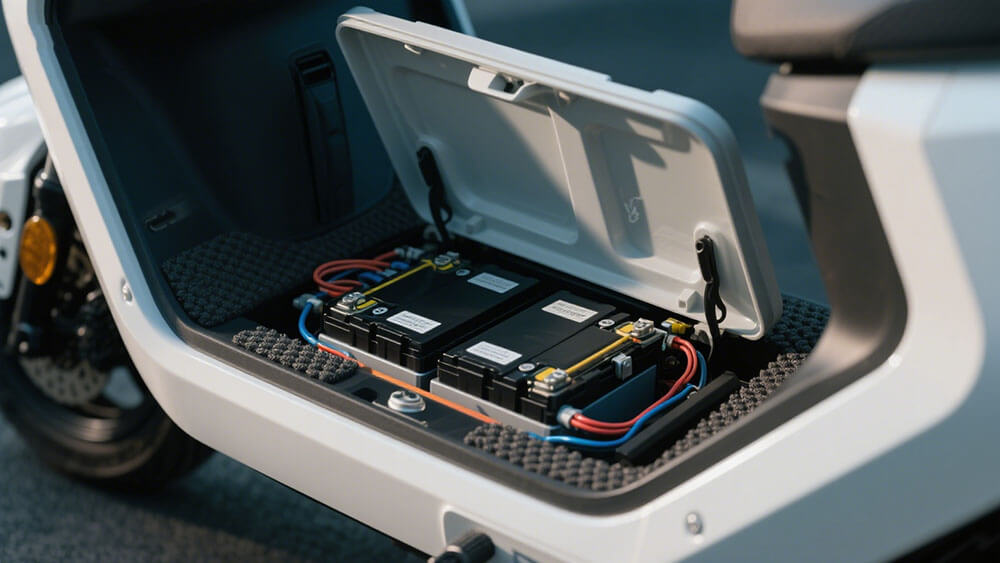
5.1 Comparing Cost, Value, and Warranty
When selecting the best 5.30V lithium battery, balancing cost, value, and warranty is essential. A lower upfront cost may seem appealing, but it often comes at the expense of performance or longevity. Instead, focus on the total cost of ownership, which includes maintenance, replacement frequency, and energy efficiency. Batteries with extended lifespans and high energy density, such as NMC or LiFePO4 Lithium batteries, often provide better long-term value.
Warranty terms also play a critical role. A robust warranty reflects the manufacturer’s confidence in their product. Look for warranties that cover a significant portion of the battery’s expected lifespan, ensuring protection against defects and performance issues. For example, warranties that include coverage for cycle life and depth of discharge offer added assurance of reliability.
Tip: Evaluate the warranty claims process. A straightforward and responsive process indicates a manufacturer’s commitment to customer satisfaction.
5.2 Reading Reviews and Consulting Experts
Customer reviews and expert opinions provide valuable insights into battery performance and reliability. Reviews often highlight real-world experiences, such as runtime, durability, and safety features. Expert assessments, on the other hand, offer a technical perspective on factors like energy management and modular system compatibility.
Long-lasting batteries reduce environmental impact and operational costs.
Smart battery control systems optimize energy efficiency.
Safety conditions ensure smooth integration into large-scale projects.
Consulting industry professionals can also help you identify the best 5.30V lithium battery for your specific needs. Experts in fields like renewable energy or industrial applications often recommend batteries with sufficient storage capacity to maintain grid stability and energy supply continuity.
5.3 Partnering with Trusted Suppliers
Establishing a partnership with a reliable supplier ensures consistent access to high-quality batteries. Trusted suppliers prioritize on-time delivery, low defect rates, and compliance with industry standards.
Metric | Importance |
|---|---|
On-time Delivery | Ensures uninterrupted operations. |
Defect Rates | Reflects product quality and reliability. |
Compliance to Standards | Demonstrates adherence to safety and regulatory requirements. |
Additionally, reviews and testimonials can provide insights into a supplier’s reputation. A supplier with responsive customer support and a transparent warranty process is more likely to meet your expectations. Long-term relationships with dependable manufacturers, such as Large Power, foster trust and reliability in procurement.
Callout: For tailored solutions, consult with trusted suppliers like Large Power to meet your unique energy demands.
Company | Issue Addressed | Solution Implemented | Benefits Achieved |
|---|---|---|---|
Company Y | High energy costs and power demands | Upgraded to efficient SMPS units and power management system | 30% reduction in energy costs, enhanced competitive position |
Company Z | Equipment failures due to power quality | Installed high-quality power supplies with advanced protection | 50% reduction in downtime, improved product quality and reliability |
Prioritize batteries with proven durability and trusted certifications. Partnering with reliable suppliers ensures tailored solutions for your unique energy needs. Consult industry experts to make informed decisions that maximize long-term value.
FAQ
1. How do you determine if a 5.30V lithium battery is compatible with your device?
Check the voltage, connector type, and physical dimensions. Ensure the battery matches your device’s specifications for seamless integration.
2. What certifications should you look for when buying a lithium battery?
Prioritize certifications like UL 1642, IEC 62133, and UN 38.3. These ensure compliance with safety, environmental, and transportation standards.
3. How can you extend the lifespan of your lithium battery?
Use a CC/CV charger, avoid overcharging, and maintain a discharge rate below 0.5C. Follow manufacturer guidelines for optimal performance.




